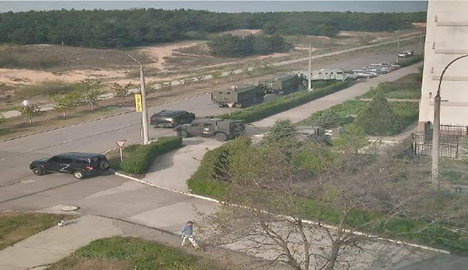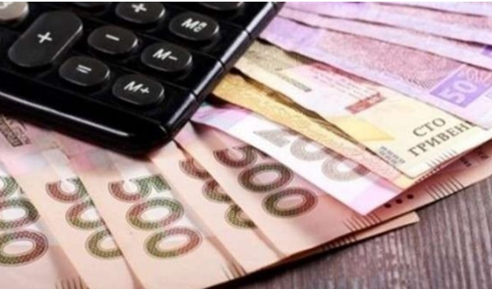Yesterday, the occupiers shelled civilian infrastructure in the area of 16 settlements of the Zaporizhzhia region, – regional military administration

The Russian aggressors continue to shell the populated areas of the Zaporizhzhia region, thereby terrorizing the civilian population.
This was reported by the Zaporizhzhia Regional Military Administration.
“According to the report of the main administration of the national police in the Zaporizhzhia region, during the past day, the occupiers fired at civilian infrastructure in the area of the settlements of Novodanilivka, Biloghirya, Dorozhnyanka, Poltavka, Charivne, Gulyaipole, Novoandriivka, Mala Tokmachka, Olhivske, Shevchenko, Malynyvka, Shcherbaki, Zaliznychne, Orihiv , Stepove, Kamianske.
27 reports were received about the destruction of houses (apartments) of citizens and infrastructure objects as a result of shelling by Russian military personnel,” the message reads.

In the strategic city of Zaporizhzhia region, the occupiers are evicting people from their apartments and moving Russians into them
In the occupied Energodar, people are being kicked out of their apartments and Russians are settling there.
In the temporarily occupied Energodar, the Russians occupy the apartments of local residents in order to house energy workers from the Russian nuclear power plants there. This is necessary for the occupiers in order to replace the employees of the Zaporizhzhya NPP, who refuse to sign contracts with the invaders and continue to perform their duties within the framework of Ukrainian legislation.
Illegal business trips to Energodar by NPP workers from the territory of the Russian Federation occur systematically. To encourage “business trips” to Ukraine, the Parliament of the Russian Federation adopted the relevant law on providing workers who agreed. This was reported by the Center of National Resistance.
In Energodar, the Russian invaders forced about 3,000 workers of the Zaporizhzhіa NPP to obtain Russian passports.
In addition, the Ukrainian hryvnia was taken out of circulation in the city, threatening entrepreneurs with fines and confiscation of property.
In Energodar, the Russians are setting up warehouses in the basements of residential buildings.
It happens like this: 2-3 trucks pull up. Several occupiers look out the windows of a residential building. Probably, they record “witnesses”. Other Russian scum bring wooden boxes in large quantities.
The Russian occupiers know that the Armed Forces will not attack residential buildings. Similar “night works” were noticed at once in several houses 5 and 7 of the microdistrict.
It is also known about a large amount of ammunition in the “communication hub” building near the city executive committee.

Monthly state payments began to be received on the cards of Berdians who have the status of residents of the occupied territories or internally displaced persons. Also, banking institutions began to transfer the assigned social benefits to their recipients
Cashless hryvnia on bank cards does not lose value in the occupation. On the contrary: the demand for it is growing rapidly.
In local online currency exchange groups, there are a lot of ads about buying cashless Ukrainian hryvnia for rubles.
This is due to several factors: no one believes in the current exchange rate of the ruble, and residents are not going to keep savings in rubles. The money mass of the ruble simply flooded the city, literally “stamped like mud”, say the locals. In addition, it is easier and more profitable to buy foreign currency with the hryvnia. This was reported by the headquarters of the Berdyansk City Executive Committee.
On January 1, the Russians banned the hryvnia in the temporarily occupied territories. Officially, Ukrainian currency is not accepted anywhere, but local residents are not ready to part with it.
“Yes, indeed, we are forced to abandon the hryvnia circulation, because we are afraid that the Rashists may organize a roundup and, if they find hryvnias among the sellers, there may be problems. But, I’ll tell you honestly, I didn’t even hide the price tags for my goods, which were written in hryvnias, because I know that it’s all short-lived!” said a resident of Berdyanska, who trades at one of the markets.
Some sellers still take the hryvnia when they cannot part with the buyer, despite the threat of inspections. Also, in some small shops, you can pay with a hryvnia card at the terminal.

Russian invaders began to restore order in Melitopol. They do it in their spirit, creating even more problems.
The prices of goods in occupied Melitopol have long become almost the main cause of complaints of local residents. Russian products of dubious quality are sold here at high prices – sometimes, the prices in Melitopol are even higher than in Moscow.
And the most important thing is that no one controls pricing in the city, and each outlet is free to set any prices it wants. Almost a year after the beginning of the occupation, the Russian invaders decided to turn their attention to this situation and bring order to the “price arbitrariness”.
Anton Koltsov, the so-called Chairman of the Council of Ministers of the Provisional Administration of the Zaporizhzhіa Region, a “tourist” from Vologda, signed a decree that regulates the prices of socially important goods. This happened not after the endless complaints of local residents about terribly high, uncontrollable prices, but after Putin personally threatened with a finger and declared the “necessity of price control” in the occupied territories.
Here, for example, are the maximum allowable prices set by the new decree for some food products (prices are indicated per 1 kg):
Chilled and frozen chickens – 208 rubles; beef – 248.09 rubles; pork – 296.9 rubles
- Sunflower oil – 86.47 rubles; butter – 516.82 rubles.
- Chicken eggs (10 pcs.) – 77 rubles
- Granulated sugar – 72 rubles
- Salt – 24.77 rubles
- Rye flour bread – 52.27 rubles; wheat flour bread – 51.31 rubles.
- Buckwheat groats – 107.73 rubles; rice – 66 rubles
- Dry mixtures for baby food – 994.16 rubles
- Potatoes – 18 rubles; cabbage – 18.3 rubles; onion – 26.5 rubles; carrots – 26 rubles; beets – 24 rubles
The occupiers have already managed to threaten all entrepreneurs and traders in Melitopol with sanctions and fines for violating these pricing rules. It would be all right, but there are doubts that the new regulatory law will be implemented in principle.
The main obstacle to a real reduction in prices, as before, is the problem with the purchase and import of goods, which the occupiers are not solving at all.
Russian goods still reach Melitopol mainly from Crimea, where local speculators, under the “roof” of the occupation authorities of the peninsula, resell them to Melitopol merchants at an inflated price. Taking into account all the costs of purchase and transportation, entrepreneurs have to sell products here at triple the price in order for the business to bring at least some profit. Of course, there are enough impudent merchants who completely unjustifiably knock off three skins from the population, but the majority of entrepreneurs are put to a standstill by the harsh restrictions of the invaders and the lack of alternative suppliers and procurement methods.

In Melitopol, local rioters do not stop mocking civilians. Due to games with the ruble exchange rate and the “hryvnia ban”, the prices of products are now increasing daily.
Residents of the occupied city say that with such a rate of increase in food prices, famine may begin in Melitopol, because people have no money. The rise in prices began after Gauleiter E. Balytsky artificially lowered the exchange rate of the hryvnia to the ruble by his decree, and then completely banned it.
Bread cost 18 rubles per loaf, and today the people of Melitopol were in for an unpleasant surprise. On the price tag, the price has almost doubled – 28 rubles. Moreover, according to sellers, it will double in price from next month.
– The national pension of 10,000 rubles per month is barely enough for food, – the citizen of Melitopol is indignant. I’m not talking about clothes and medicine. Currently, these categories of goods can be afforded only by working people, and such units.
After the occupation of Ukrainian cities, the invaders began to set exorbitant prices for products for the civilian population. For example, in Energodar, the price of bakery products increased by 4-5 times – bread cost 100 hryvnias, and the price of crab sticks exceeded 1,000 hryvnias.
